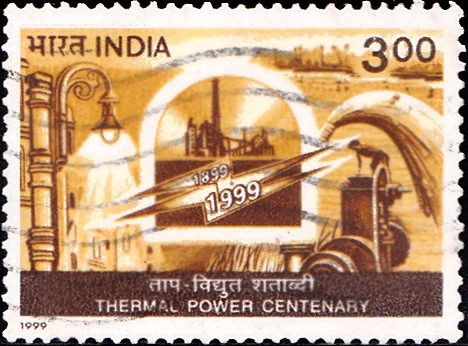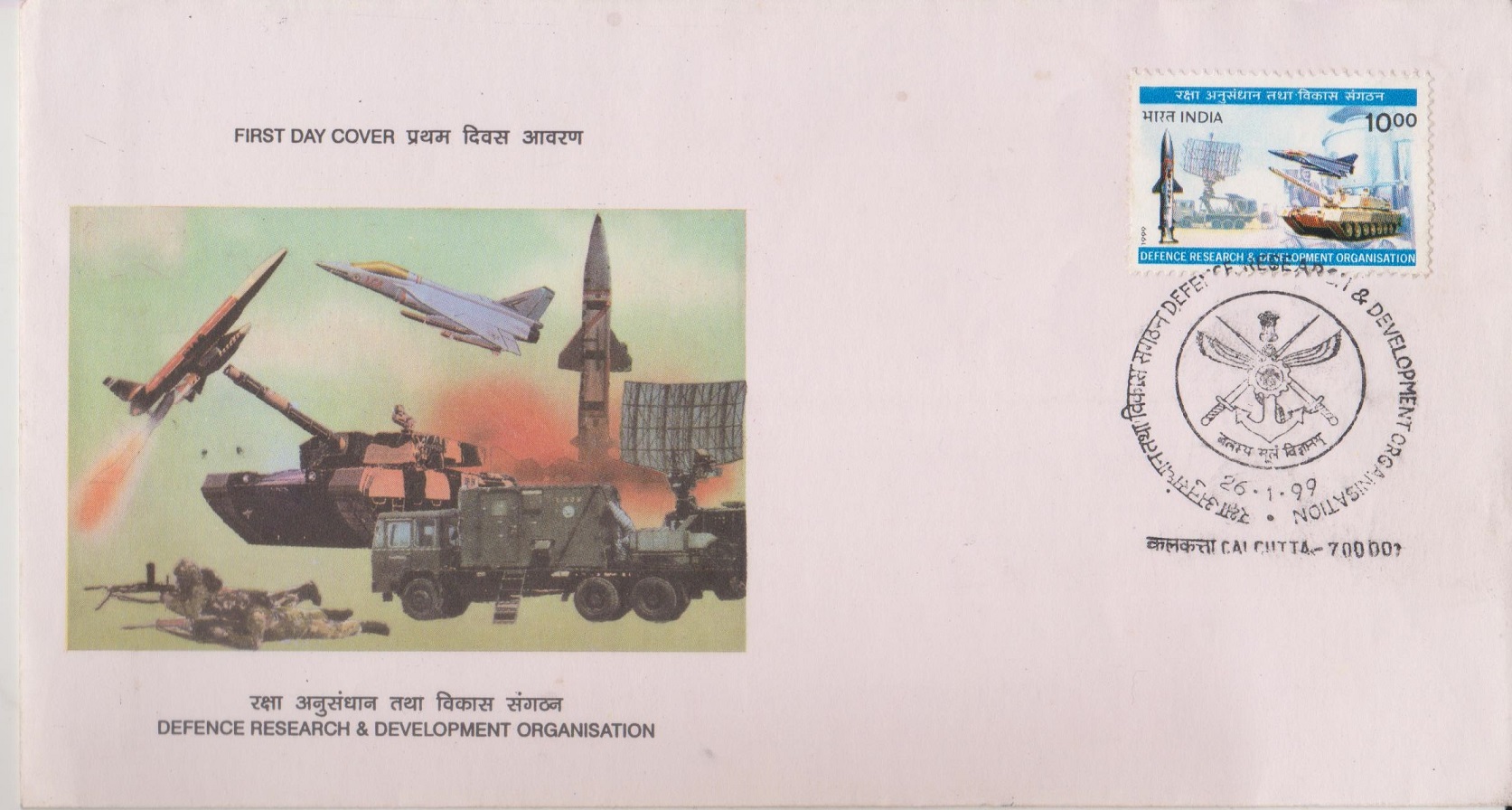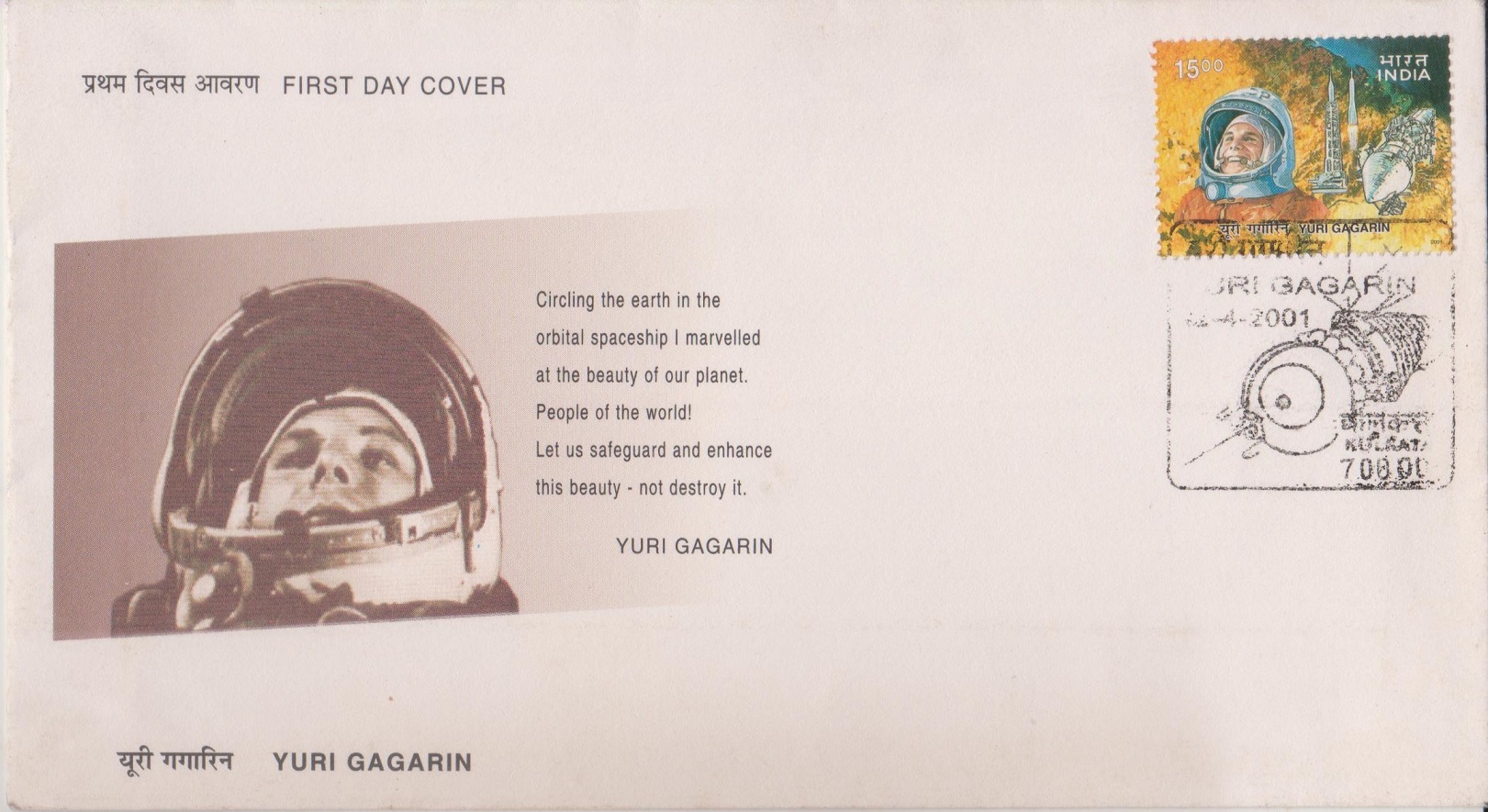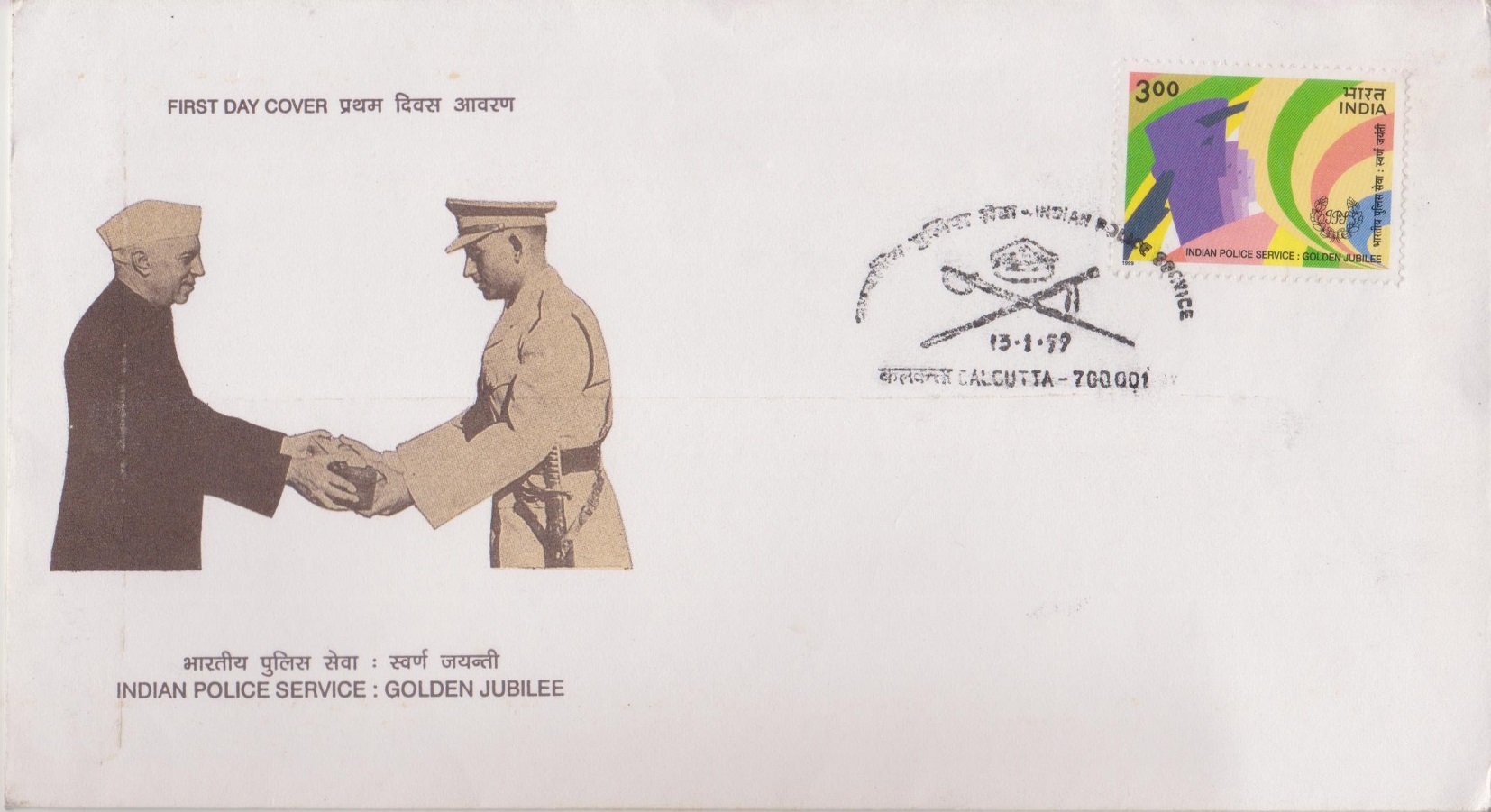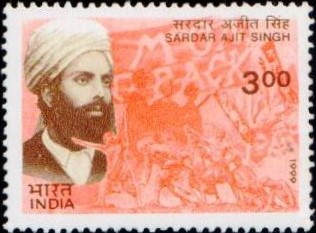
Sri Sathya Sai Water Supply Project
A commemorative postage stamp on the Sri Sathya Sai Drinking Water Supply Project (surface water from Tungabhadra Canal), Anantapur District, Andhra Pradesh :
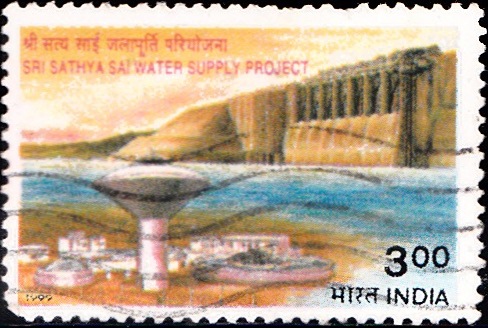
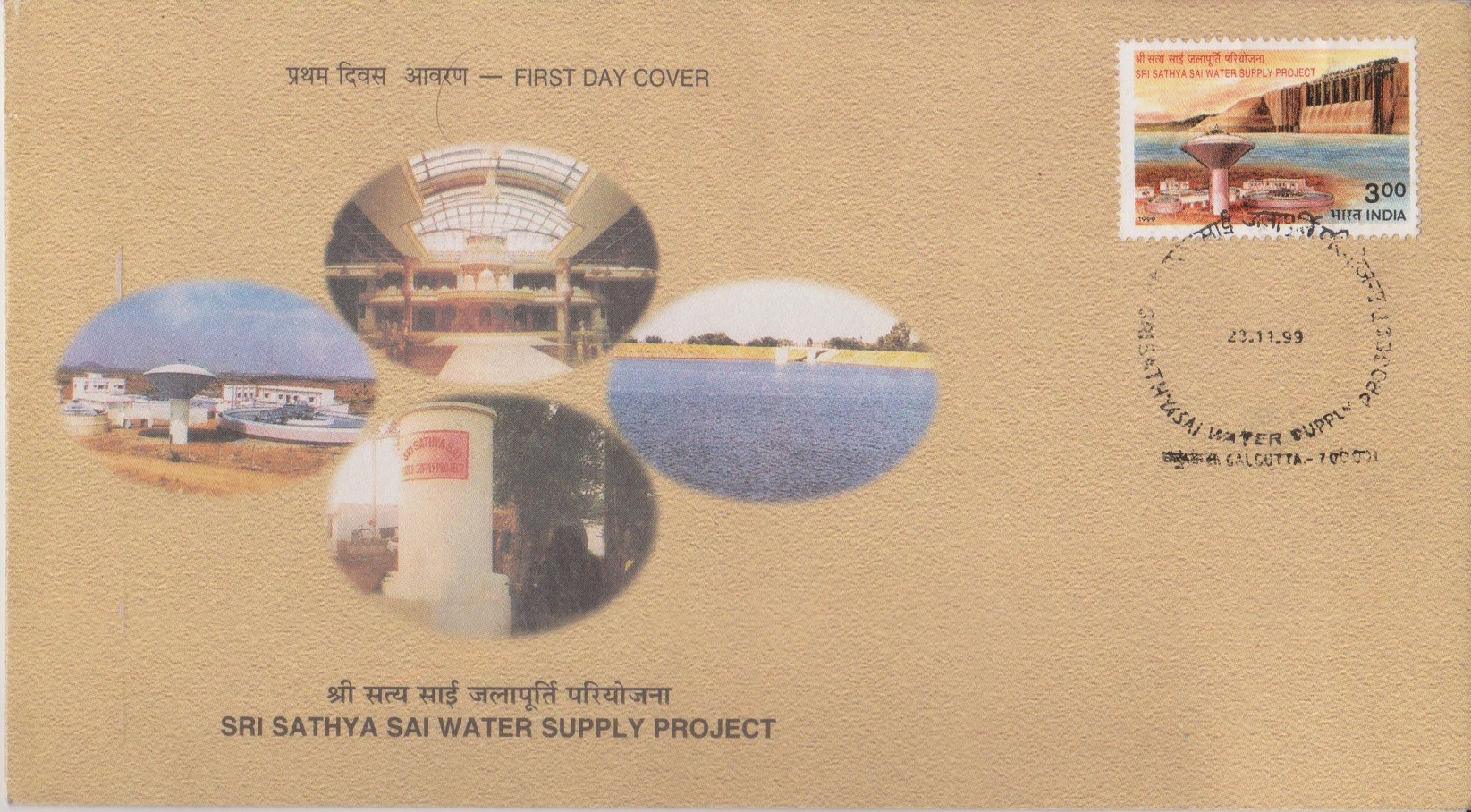 Issued by India
Issued by India
Issued on Nov 23, 1999
Issued for : The Department of Posts is happy to issue this postage stamp in recognition of the pioneering service rendered by the Sri Sathya Sai Central Trust in addressing the problem of provision of drinking water to the rural masses.
Credits :
Stamp, FDC & Cancellation : Based on material furnished by the sponsors.
Type : Stamp, Postal Used
Colour : Multi Colour
Denomination : 300 Paise
Overall size : 4.06 x 2.73 cms.
Printing size : 3.71 x 2.38 cms.
Perforation : 13 x 13
Paper : Imported un w/m Adhesive Gravure Coated Stamp Paper in Sheets 50.8 x 53.5 cms.
Stamps Printed : 1.4 Million
Number per issue sheet : 40
Printing Process : Photogravure
Printer : India Security Press, Nashik
About :
- The importance of providing safe drinking water to the poor of free India, particularly in the rural areas, was recognised by the planners and policy makers very early. A national water supply and sanitation programme was introduced in social welfare sector in the year 1954. Further in 1972-73, the Central Government introduced the Accelerated Rural Water Supply Programme (ARWSP) to assist the States and Union Territories with 100% grants-in-aid to implement the schemes in such villages. In 1986, the Technology Mission on Drinking Water and Related Water Management was introduced as one of the five Societal Missions. The objectives of the National Drinking Water Mission included coverage of 1.4 lakh residual problem villages with safe drinking water, evolving appropriate technology mix and improving performance and cost effectiveness of ongoing programmes.
- That the magnitude of the problem is daunting becomes evident when we consider the fact that despite attaching priority to water supply projects, the country is yet to achieve the prescribed norm of providing 40 litres of safe drinking water per capita per day (lpcd) for human beings and in the Desert Development Programme areas, an additional 30 lpcd for cattle. Out of the total 13 lakh habitats in the country, four lakh do not have access to safe drinking water. One positive development in the country’s efforts to provide drinking water to all her citizens has been the entry of voluntary agencies into this area. It is in this context that Sri Sathya Sai Drinking Water Supply Project (SSSDWSP) was undertaken by Sri Sathya Sai Central Trust in one of the most chronically drought prone regions, namely, Anantapur District of Andhra Pradesh with high fluoride content in ground water resources. The project was directed, funded and executed by the Trust under the guidance of Sri Sathya Sai Baba in a record time of less than 18 months costing about Rs. 250 crores and benefitting 32 lakh people. In fact the first phase had become operational in just six months from the start covering 125 villages out of the total number of 731 finally covered. This precious gift of treated potable drinking water at the turn of tap, was given to the people of Anantapur district of Andhra Pradesh by the Trust on the 70th birthday of Sri Sathya Sai Baba. The Water Supply Project was inaugurated by the then President of India, Honourable Shri Shankar Dayal Sharma.
- The SSSDWSP consists of four schemes:
1. Comprehensive Protected Water Supply (CPWS) schemes involving infiltration wells, collection wells and associated pumping behind the Chitravathi Balancing Reservoir at Peddakotla and Chinnakotla villages covering 169 villages. Sources for other infiltration wells include Pennar and Hagari rivers which cover 93 villages.2. Direct pumping from Penna Ahobilam Balancing Reservoir (PABR) and treatment through rapid sand filtration system. This consists of two major lines passing Kalyandurg and Atmakur covering 93 villages.3. The Comprehensive Protected Water Supply (CPWS) schemes through seven summer storage tanks ranging upto 100 acres by tapping water from Tungabhadra High Level Canal, when water flows in the canal covering 97 villages.
4. The Protected Water Supply (PWS) covers 279 villages. It involves drilling deep bore-wells, construction of storage tanks and installation of pipeline networks.
- This project covers an area of 19,125 sq. km. involving 2500 km pipe lines of various diameters, 268 overhead services reservoirs (OHSR), 124 ground level service reservoirs (GLSR), 21 ground level balancing reservoirs (GLBR), 40 booster stations, 7 summer storage tanks, 13 infiltration wells and 280 bore-wells. The project is unique in that a project of this magnitude was completed in a stringent time frame and entirely funded by a charitable organisation for the first time anywhere in the country.
- Sri Sathya Sai Central Trust is now undertaking similar water projects in the Mahabubnagar and Medak districts of Andhra Pradesh, covering about 300 villages. The Trust has also been rendering philanthropic services in the fields of education and health, through the educational institutions and hospitals managed by it.
- Text: Based on material furnished by the sponsors.


